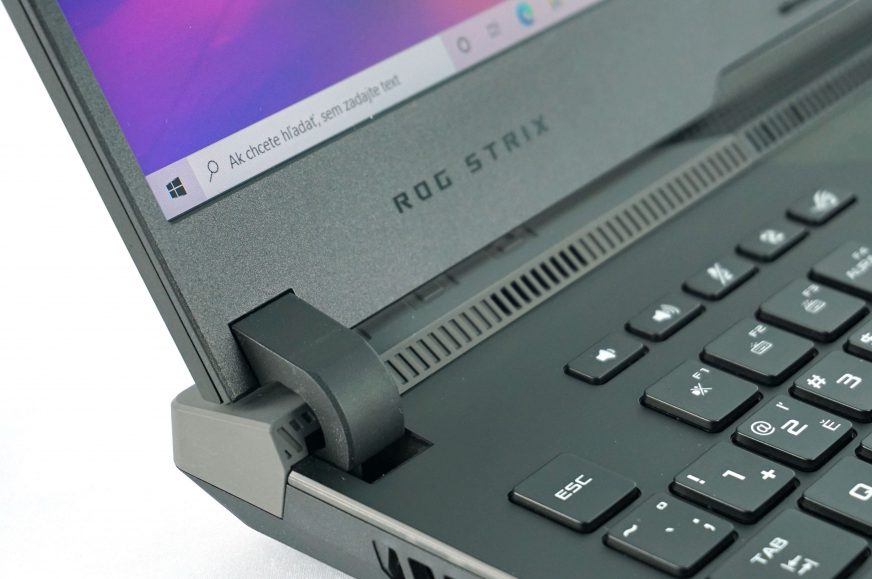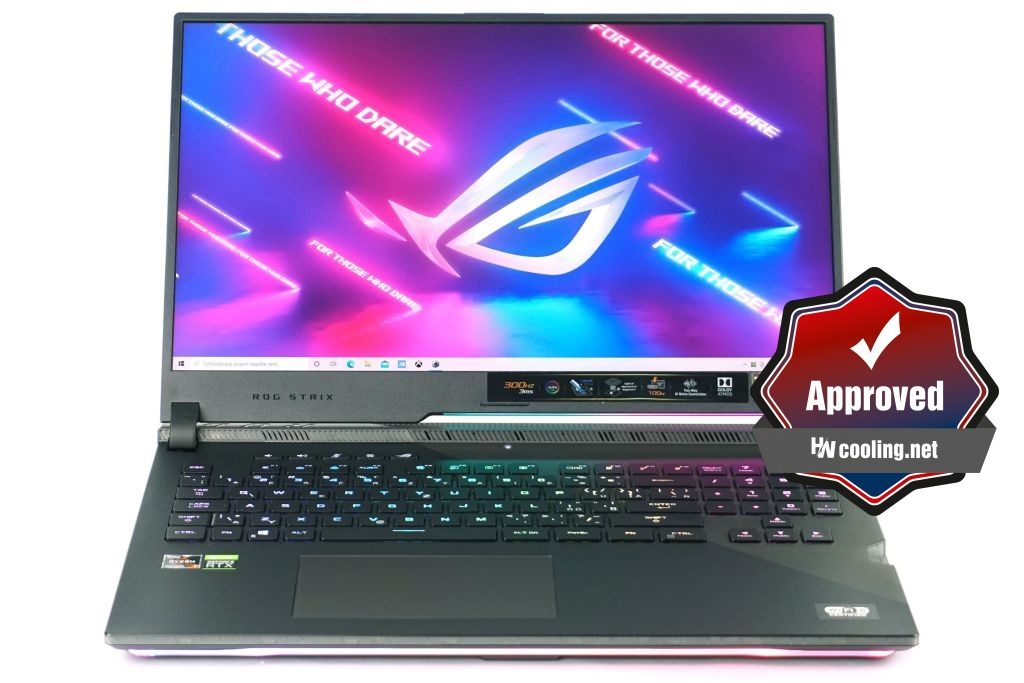Conclusion
Asus has taken a very bold and quite surprising step this year with its gaming laptop portfolio. It switched extensively to Ryzen 5000 processors and combined them with the new GeForce RTX 3000 mobile graphics cards. The new ROG Strix SCAR 17 is thus the first look at a new stage of mobile gaming, in the highest configuration with 8-core processor and a 16-gigabyte RTX 3080.
Conclusion
The Strix SCAR 17 is and has always been a black horse of the ROG gaming line in my opinion. Although it does not carry the name Zephyrus, which all the top models have, it offers top equipment in a relatively bearable price category. Especially if we compare it with the Zephyrus Duo, for example… The 17-inch version is also a bit of a unicorn, as most of the market consists of 15-inch laptops, although I know people who are looking for larger models. The larger dimensions allow the manufacturer to use a better cooling system and more “power-thirsty” components than the predecessor with the 150 W RTX 2080 Super. This time, however, the SCAR received the “only” a 115 W version. It is the TDP of new graphics cards that will play a big role for this generation and it is still too early for the overall rating of the first sample. However, the measured results show that the SCAR has improved by about 10–15% with CPU and 10–30% with GPU depending on the use. Together, therefore, it is a solid increase in performance and the arrival of new generations of both key components at once seems to be the ideal time to upgrade.
The SCAR 17 offers many positives such as a fast display, an interesting optical-mechanical keyboard, a large touchpad, many ports, unconventional design elements with interchangeable or transparent parts and RGB backlighting, of which a Christmas tree would not be ashamed. I also praise the applications for adjusting settings, functional performance modes with a real impact on operation, or an interesting element in the form of a keychain – Keystone. Overall, the new SCAR offers a number of improvements, whether it’s cooling, charging, battery or smaller external dimensions compared to its predecessor.
Of course, there are areas where the notebook could be even better. The main point is probably the biometric security that the Zephyrus G14 already had, but this novelty doesn’t. Also nowadays, a webcam is almost a necessity, and although in the package you will find a perfect external camera with a better image than any other laptop, it would still be better integrated. There is a lot of space under the display, and if the entire display was moved down the body, a camera would certainly fit on the top edge, or even a 3D IR version with face recognition, such as ZenBooks have. Then no fingerprint reader would be needed.
My personal keyboard layout preferences are a bit at odds with what SCAR offers, but what is objective is that the black area around the keyboard and touchpad gets very dirty easily. It is nice to the touch, but constant cleaning from fingerprints will definitely bother you. I don’t know if that was the most suitable choice of material. However, all these are just such little details and do not change anything on the functional side. For those interested in a 17-inch gaming notebook, the new SCAR 17 is definitely an interesting choice.
| Asus ROG Strix SCAR 17 G733QS-HG034T |
| + high CPU performance and load stability (10–15% increase over the predecessor in both SC and MC) |
| + new generation GPU with up to 16 GB VRAM and 10–30% higher performance |
| + 300 Hz gaming display with good color accuracy and brightness |
| + very good optical-mechanical keyboard |
| + rich port connectivity |
| + high build quality, robust body, customization options and RGB backlight on all sides |
| + applications to adjust settings, performance modes and innovative Keystone integration |
| + above standard speakers |
| + rich package with two chargers |
| - no biometric security |
| - absence of integrated camera (external one in a package with great image) |
| - a weird shift of the numeric part of the keyboard one row up – requires getting used to |
| - the black area around the keyboard gets very dirty |
Thank you to Spacebar for providing us with games for our tests
- Contents
- Specs and details
- Testing methodology
- Display tests
- Rendering and Geekbench
- 3D/PC Mark and Unigine Heaven/Superposition
- Gaming tests – dedicated GPU
- Encryption, encoding
- Memory and storage tests
- Heating and battery life
- Blender – CPU, CUDA and Optix tests
- Performance modes
- Utility app
- Conclusion













